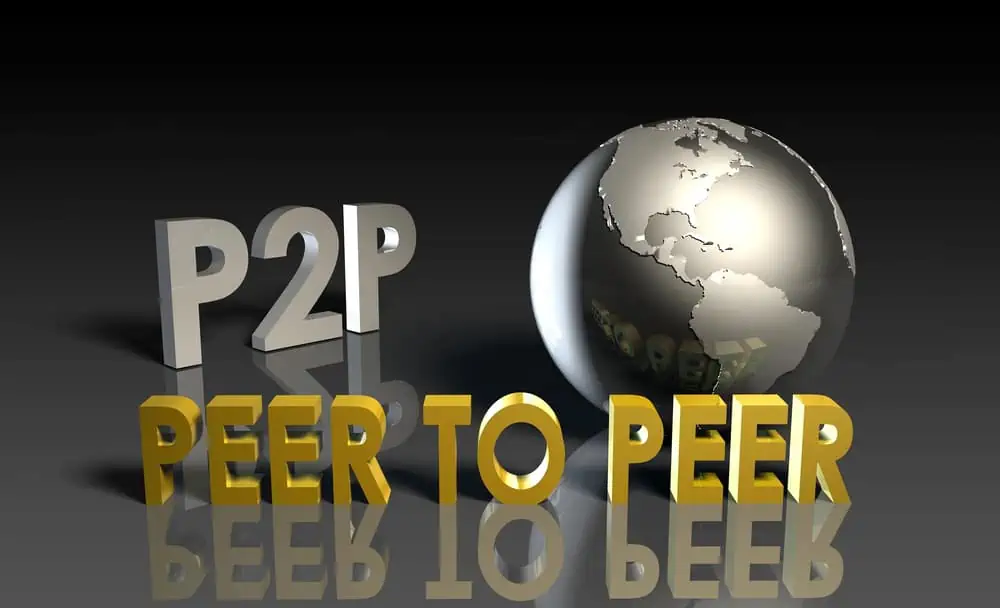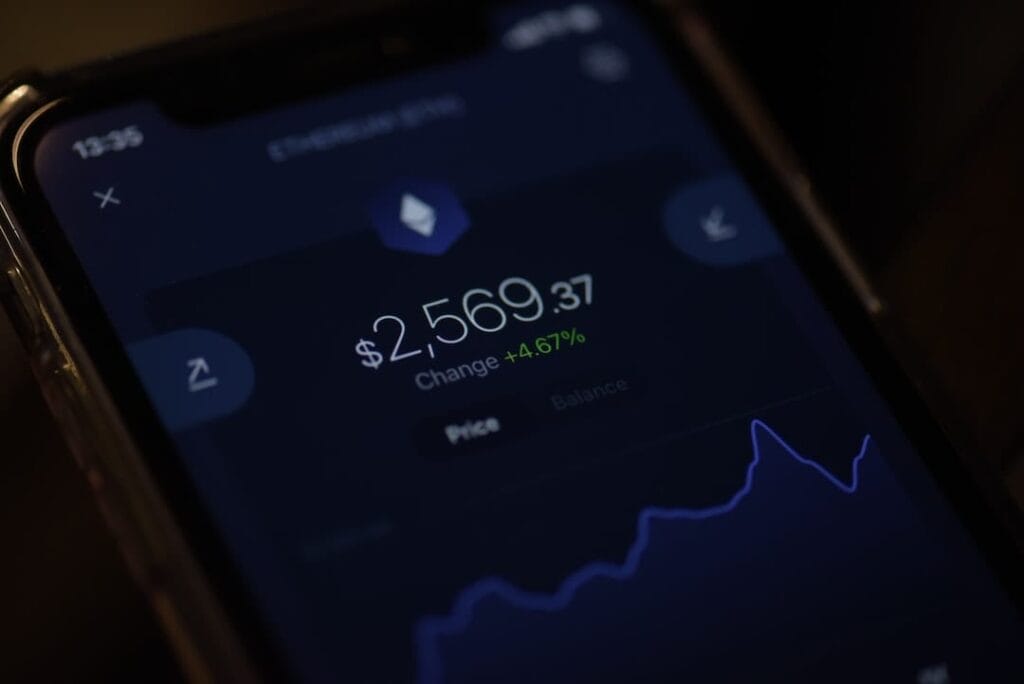Peer-to-peer lending, also known as P2P lending, is a form of lending that connects borrowers directly with lenders through online platforms. It eliminates the need for traditional financial institutions such as banks, allowing individuals to lend and borrow money from each other. P2P lending has gained popularity in recent years as an alternative investment option, offering high returns and low fees. In this article, we will explore the pros and cons of peer-to-peer lending and help you determine if it is the right investment option for you.
Disclaimer: This information is general in nature and for informational purposes only. It is not personal financial advice and has not taken into account your personal financial position or objectives. Make sure to refer to a licensed financial or tax advisor.
The concept of peer-to-peer lending dates back to ancient times, where individuals would lend money to each other within their communities. However, it wasn’t until the early 2000s that P2P lending became popularized through the emergence of online platforms. The first notable platform was Zopa, launched in the United Kingdom in 2005. Since then, numerous P2P lending platforms have emerged worldwide, offering individuals the opportunity to lend and borrow money directly.
Table of Contents
Key Takeaways
- Peer-to-peer lending offers high returns compared to traditional investments
- However, it also comes with high risk due to lack of regulation and limited borrower protections
- Low fees make it an attractive option for investors
- Accessibility is another advantage of peer-to-peer lending
- Diversification is possible through investing in multiple loans, but default rates should be considered before investing.
Pros of Peer-to-Peer Lending: High Returns
One of the main advantages of peer-to-peer lending is the potential for high returns. As an investor, you can earn interest on the money you lend out to borrowers. The interest rates offered by P2P lending platforms are often higher than those offered by traditional savings accounts or bonds. This is because borrowers who turn to P2P lending are often seeking loans that they may not be able to obtain from traditional financial institutions due to their credit history or other factors.
To put it into perspective, let’s compare the returns of peer-to-peer lending to other investment options. The average annual return on P2P lending can range from 5% to 10%, depending on the platform and the risk level of the loans you choose to invest in. In comparison, the average annual return on stocks is around 7% to 8%, while the average annual return on bonds is around 2% to 3%. Therefore, peer-to-peer lending offers the potential for higher returns than these traditional investment options.
There have been numerous success stories of investors earning significant returns through peer-to-peer lending. For example, a P2P lending investor named John invested $10,000 in various loans on a platform and earned an average annual return of 8% over a five-year period. By the end of the five years, his initial investment had grown to $14,693. This demonstrates the potential for high returns that can be achieved through peer-to-peer lending.
Cons of Peer-to-Peer Lending: High Risk
While peer-to-peer lending offers the potential for high returns, it also comes with high risk. When you lend money through P2P lending platforms, there is a chance that borrowers may default on their loans and fail to repay you. This risk is inherent in any form of lending, but it is particularly pronounced in peer-to-peer lending due to the lack of collateral and the fact that borrowers may have lower credit scores or financial stability.
To compare the risk of peer-to-peer lending to other investment options, let’s consider stocks and bonds. Stocks are considered to be higher risk investments due to their volatility and the potential for companies to go bankrupt. However, with proper diversification and research, investors can mitigate some of this risk. Bonds, on the other hand, are generally considered lower risk investments as they offer fixed interest payments and repayment of principal at maturity.
In terms of default rates, peer-to-peer lending has historically experienced higher default rates compared to stocks and bonds. The default rate on P2P loans can range from 2% to 5%, depending on the platform and the risk level of the loans. In comparison, the default rate on stocks is around 1% to 2%, while the default rate on investment-grade bonds is less than 1%. Therefore, it is important to carefully assess the risk of each loan before investing in peer-to-peer lending.
There have been instances where investors have experienced losses due to defaults in peer-to-peer lending. For example, an investor named Sarah invested $5,000 in P2P loans and experienced a default rate of 3%. This resulted in a loss of $150. While this may not seem significant, it highlights the risk that investors face when lending money through P2P lending platforms.
Pros of Peer-to-Peer Lending: Low Fees
| Pros of Peer-to-Peer Lending: Low Fees |
|---|
| 1. Lower interest rates compared to traditional banks |
| 2. No hidden fees or charges |
| 3. Lower origination fees |
| 4. No prepayment penalties |
| 5. Lower late payment fees |
Another advantage of peer-to-peer lending is the low fees associated with the investment. Traditional financial institutions often charge high fees for their services, such as account maintenance fees or transaction fees. In contrast, P2P lending platforms typically charge lower fees, allowing investors to keep a larger portion of their returns.
The fees charged by P2P lending platforms can vary, but they are generally lower than those charged by banks or investment firms. For example, some platforms may charge an origination fee of 1% to 5% on each loan, while others may charge a small percentage of the interest earned. These fees are deducted from the interest payments received by investors, but they are still significantly lower than the fees charged by traditional financial institutions.
To compare the fees of peer-to-peer lending to other investment options, let’s consider mutual funds and exchange-traded funds (ETFs). Mutual funds and ETFs often charge management fees, which can range from 0.5% to 2% per year. These fees are deducted from the total assets under management and can significantly reduce an investor’s returns over time. Therefore, peer-to-peer lending offers a cost-effective alternative for investors looking to minimize fees and maximize returns.
The low fees associated with peer-to-peer lending can benefit investors in several ways. Firstly, it allows investors to keep a larger portion of their returns, increasing their overall profitability. Secondly, it makes peer-to-peer lending accessible to a wider range of investors, including those with smaller investment amounts. Lastly, it encourages investors to diversify their portfolios by investing in multiple loans, as the low fees make it more cost-effective to do so.
Cons of Peer-to-Peer Lending: Lack of Regulation
One of the drawbacks of peer-to-peer lending is the lack of regulation in the industry. Unlike traditional financial institutions, P2P lending platforms are not subject to the same level of oversight and regulation. This can expose investors to potential risks and fraudulent activities, as there are fewer safeguards in place to protect their interests.
In comparison, traditional financial institutions such as banks and investment firms are heavily regulated by government agencies and regulatory bodies. These regulations are designed to protect consumers and ensure the stability and integrity of the financial system. For example, banks are required to adhere to strict lending standards and maintain certain capital reserves to mitigate risk.
The lack of regulation in peer-to-peer lending can have negative consequences for investors. For example, there have been cases where P2P lending platforms have collapsed or engaged in fraudulent activities, resulting in significant losses for investors. In some cases, investors have been unable to recover their funds due to the lack of regulatory oversight.
One notable example is the collapse of a P2P lending platform called LendingClub in 2016. The platform was accused of misleading investors and violating securities laws, leading to a decline in investor confidence and a drop in the company’s stock price. This incident highlighted the need for stronger regulation in the peer-to-peer lending industry to protect investors from potential risks.
Pros of Peer-to-Peer Lending: Accessibility

One of the key advantages of peer-to-peer lending is its accessibility. Unlike traditional investment options that may require a large initial investment or have strict eligibility criteria, P2P lending allows individuals to start investing with small amounts of money and without any specific qualifications. This makes it an attractive option for individuals who may not have access to traditional financial services or who are looking for alternative investment opportunities.
To compare the accessibility of peer-to-peer lending to other investment options, let’s consider real estate and private equity. Real estate investments often require a significant amount of capital, making it inaccessible to many individuals. Similarly, private equity investments typically require a high net worth and are only available to accredited investors. In contrast, peer-to-peer lending platforms allow individuals to start investing with as little as $25, making it accessible to a wide range of investors.
The accessibility of peer-to-peer lending can benefit investors in several ways. Firstly, it allows individuals with limited funds to start investing and potentially earn high returns. Secondly, it provides an opportunity for diversification, as investors can spread their funds across multiple loans with small investment amounts. Lastly, it promotes financial inclusion by providing access to credit for borrowers who may not qualify for loans from traditional financial institutions.
Cons of Peer-to-Peer Lending: Limited Borrower Protections
While peer-to-peer lending offers accessibility to borrowers, it also comes with limited borrower protections. Unlike traditional loans that are backed by collateral or subject to strict lending standards, P2P loans are often unsecured and may not have the same level of borrower protections. This can expose borrowers to potential risks and predatory lending practices.
In comparison, traditional financial institutions are required to adhere to certain lending standards and provide borrower protections. For example, banks are required to assess a borrower’s creditworthiness and ensure that they have the ability to repay the loan. They are also subject to regulations that prohibit predatory lending practices and provide recourse for borrowers in case of disputes.
The limited borrower protections in peer-to-peer lending can have negative consequences for borrowers. For example, there have been cases where borrowers have been charged exorbitant interest rates or subjected to unfair collection practices by P2P lending platforms. In some cases, borrowers have been unable to resolve disputes or seek recourse due to the lack of regulatory oversight.
One notable example is the case of a borrower named Jane who took out a loan through a P2P lending platform. She was charged an interest rate of 30%, which was significantly higher than the market rate for similar loans. Despite her efforts to negotiate a lower rate or seek assistance from regulatory authorities, she was unable to resolve the issue and ended up defaulting on the loan. This incident highlights the need for stronger borrower protections in the peer-to-peer lending industry.
Pros of Peer-to-Peer Lending: Diversification
Diversification is another advantage of peer-to-peer lending. By investing in multiple loans across different risk levels and borrower profiles, investors can spread their risk and potentially increase their returns. This is particularly beneficial in peer-to-peer lending, where individual loans are relatively small and investors can easily diversify their portfolios.
To compare the diversification of peer-to-peer lending to other investment options, let’s consider stocks and bonds. Stocks are often considered high-risk investments due to their volatility and the potential for individual companies to perform poorly. However, by investing in a diversified portfolio of stocks across different industries and sectors, investors can mitigate some of this risk. Similarly, bonds can be diversified by investing in different issuers and maturities.
In peer-to-peer lending, investors can diversify their portfolios by investing in multiple loans across different risk levels and borrower profiles. For example, an investor can allocate a portion of their funds to low-risk loans with lower interest rates and another portion to high-risk loans with higher interest rates. This allows investors to balance their risk and potential returns, increasing the overall stability of their portfolio.
There have been instances where investors have benefited from diversification in peer-to-peer lending. For example, an investor named Mark allocated his funds across 100 different loans on a P2P lending platform. Despite experiencing a default rate of 5%, his overall returns were still positive due to the diversification of his portfolio. This demonstrates the potential benefits of diversification in peer-to-peer lending.
Cons of Peer-to-Peer Lending: Default Rates
One of the drawbacks of peer-to-peer lending is the risk of default. When borrowers fail to repay their loans, investors may experience losses and a decline in their overall returns. This risk is inherent in any form of lending, but it is particularly pronounced in peer-to-peer lending due to the higher default rates compared to other investment options.
To compare the default rates of peer-to-peer lending to other investment options, let’s consider stocks and bonds. Stocks are considered higher risk investments due to the potential for companies to go bankrupt or perform poorly. However, by investing in a diversified portfolio of stocks, investors can mitigate some of this risk. Similarly, bonds are considered lower risk investments as they offer fixed interest payments and repayment of principal at maturity.
In terms of default rates, peer-to-peer lending has historically experienced higher default rates compared to stocks and bonds. The default rate on P2P loans can range from 2% to 5%, depending on the platform and the risk level of the loans. In comparison, the default rate on stocks is around 1% to 2%, while the default rate on investment-grade bonds is less than 1%. Therefore, it is important for investors to carefully assess the risk of each loan before investing in peer-to-peer lending.
There have been instances where investors have experienced losses due to defaults in peer-to-peer lending. For example, an investor named Lisa invested $10,000 in P2P loans and experienced a default rate of 4%. This resulted in a loss of $400. While this may not seem significant, it highlights the risk that investors face when lending money through P2P lending platforms.
Is Peer-to-Peer Lending Right for You?
In conclusion, peer-to-peer lending offers both advantages and disadvantages as an investment option. It provides the potential for high returns, low fees, accessibility, and diversification. However, it also comes with high risk, lack of regulation, limited borrower protections, and default rates. When deciding if peer-to-peer lending is right for you, it is important to consider your risk tolerance, investment goals, and financial situation.
If you are comfortable with the higher risk associated with peer-to-peer lending and have the ability to absorb potential losses, it can be a viable investment option to consider. However, it is crucial to conduct thorough research and due diligence before investing in P2P loans. This includes assessing the creditworthiness of borrowers, diversifying your portfolio, and carefully selecting reputable platforms.
Ultimately, peer-to-peer lending can be a valuable addition to your investment portfolio if used wisely. It offers the potential for high returns and low fees, while also providing accessibility and diversification. However, it is important to approach P2P lending with caution and carefully consider the risks involved. By doing so, you can make informed investment decisions and potentially benefit from the opportunities offered by peer-to-peer lending.
FAQs
What is peer-to-peer lending?
Peer-to-peer lending is a type of lending that allows individuals to lend and borrow money directly from each other without the involvement of traditional financial institutions.
How does peer-to-peer lending work?
In peer-to-peer lending, borrowers apply for loans on online platforms, and investors can choose to fund those loans. The platform acts as an intermediary, facilitating the transaction and collecting fees for its services.
What are the pros of peer-to-peer lending?
Peer-to-peer lending offers borrowers lower interest rates and fees compared to traditional lenders. It also provides investors with the opportunity to earn higher returns on their investments than they would with traditional savings accounts or bonds.
What are the cons of peer-to-peer lending?
Peer-to-peer lending is not without risks. Borrowers may default on their loans, and investors may lose their money. The lack of regulation in the industry also means that there is no guarantee of the safety of investments.
Is peer-to-peer lending a safe investment?
Peer-to-peer lending carries risks, and investors should carefully consider their options before investing. It is important to research the platform and the borrowers before investing and to diversify investments to minimize risk.
Is peer-to-peer lending regulated?
Peer-to-peer lending is not as heavily regulated as traditional financial institutions. However, some countries have introduced regulations to protect investors and borrowers, such as requiring platforms to be licensed and implementing minimum capital requirements.







